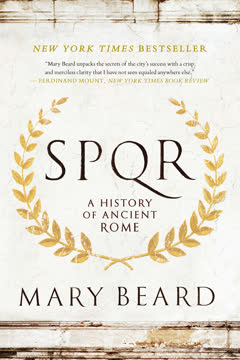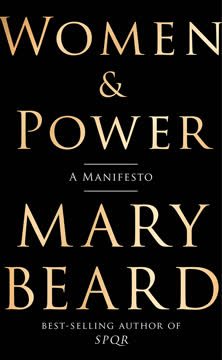Key Takeaways
1. Rome's Contested Origins: Myth, Murder, and Identity
Wherever and whenever it originated, Roman writers never stopped telling, retelling and intensely debating the story of Romulus and Remus.
Foundational myths. Ancient Rome's origins were steeped in myth, not clear history, with two dominant narratives: the fratricidal twins Romulus and Remus, and the Trojan hero Aeneas. These stories, though debated even by Romans, served as a continuous reflection on their identity, values, and perceived flaws. The tale of Romulus, for instance, highlighted:
- The city's violent birth (Remus's murder).
- Its openness to outsiders (Romulus's asylum for criminals and runaways).
- The "Rape of the Sabine Women" as the origin of Roman marriage and "just war."
Debating Romanness. Roman writers used these myths to explore fundamental questions about what it meant to be Roman. The inclusion of foreigners and criminals in Rome's founding population, for example, was seen as both a source of pride (reflecting Rome's unique inclusiveness in granting citizenship) and a point of snobbish derision (Juvenal's "crap of Romulus"). The murder of Remus by Romulus was often interpreted as a grim prophecy of Rome's recurring civil conflicts.
Archaeological insights. While myths provided cultural narratives, archaeology offers glimpses into early Rome's physical reality. Excavations reveal scattered hut settlements and cemeteries dating back to 1000 BCE, suggesting a gradual aggregation of communities rather than a single founding moment. Early Rome was an ordinary, well-connected village, with trade links to the Greek world and Etruria, but its transformation into an urban center by the 6th century BCE was a slow, contested process, far from the grand, pre-formed city of legend.
2. The Republic's Gradual Birth and Internal Strife
The Republic was born slowly, over a period of decades, if not centuries. It was reinvented many times over.
Messy transition. The traditional narrative of a swift transition from monarchy to Republic in 509 BCE, with consuls instantly replacing kings, is a simplification. Archaeological evidence suggests a violent overthrow of the monarchy, with layers of burnt debris around 500 BCE, and a period of decline rather than immediate grandeur. The defining Republican institutions, like the consulship and the senate as a permanent body, likely evolved over decades, if not centuries, after the expulsion of the Tarquins.
Conflict of the Orders. The 5th and 4th centuries BCE were dominated by the "Conflict of the Orders," a struggle between the patrician elite and the plebeian masses for political rights and equality. This conflict, often involving plebeian "walkouts" (mutinies/strikes), led to:
- The creation of tribunes of the people.
- The establishment of plebeian assemblies.
- The opening of all major offices to plebeians.
- The abolition of debt enslavement.
- The codification of laws in the Twelve Tables (mid-5th century BCE), a rudimentary but crucial step in state formation.
Liberty's definition. This period established libertas (liberty) as a core Roman value, contrasting with the tyranny of kings. However, Roman liberty was not democratic in the modern sense; it was often defined by the elite and involved a hierarchical voting system that favored the wealthy. The debates over plebeian rights, though, laid the groundwork for later discussions about citizen freedom and popular power, influencing political thought for millennia.
3. Military Expansion: The Engine of Roman Power
For the single most significant factor behind victory at this period was not tactics, equipment, skill or motivation. It was how many men you could deploy.
Unprecedented manpower. Rome's rapid expansion across Italy in the 4th and 3rd centuries BCE was fueled by its unique ability to convert defeated enemies into military allies and citizens. Unlike other ancient states, Rome systematically integrated conquered populations, demanding troops for its armies in exchange for varying degrees of citizenship or alliance. This created an unparalleled reserve of manpower, making Rome nearly invincible in the peninsula.
Strategic flexibility. Roman expansion was not a pre-planned conquest but a dynamic process of adapting existing rudimentary categories of citizenship and ethnicity. This led to a complex mosaic of statuses:
- Full Roman citizenship (with voting rights).
- "Citizenship without the vote" (civitas sine suffragio).
- Latin rights (a package of intermarriage, contract, and movement rights).
- Allies (socii) obligated to provide troops.
This flexible approach allowed Rome to grow its military strength without overextending its administrative capacity.
Beyond local skirmishes. The 4th century BCE marked a shift from local cattle raids to larger-scale conflicts, such as the Latin War and the Samnite Wars. Battles like Sentinum (295 BCE) involved tens of thousands of combatants, a scale unimaginable a century earlier. This military growth drove internal sophistication, necessitating:
- A more centralized army organization (soldiers paid from taxes).
- The beginnings of official coinage.
- Infrastructure development (aqueducts, roads like the Via Appia).
By 300 BCE, Rome controlled a vast territory and population, becoming a major Mediterranean power.
4. Empire's Paradox: Wealth, Culture, and Destabilization
Winning, in other words, brought its own problems and paradoxes.
Rapid conquest. Between Pyrrhus's invasion in 280 BCE and the destruction of Carthage and Corinth in 146 BCE, Rome conquered most of the Mediterranean world. This rapid expansion, driven by a thirst for glory and economic profit, was unprecedented. The First and Second Punic Wars against Carthage were particularly devastating, with Hannibal's invasion of Italy (Cannae, 216 BCE) highlighting Rome's resilience despite immense casualties.
Economic and social impact. Victory brought immense wealth:
- Thousands of captives became slaves, fueling an industrial-scale economy.
- Bullion poured into the state treasury, allowing for the suspension of direct taxation on Roman citizens in 167 BCE.
- New civic amenities (harbors, temples) were built.
However, this wealth also destabilized Roman society, leading to moral anxieties about "luxury" and the displacement of small farmers by large, slave-worked estates.
Cultural transformation. Overseas expansion fostered a vibrant cultural exchange, particularly with the Greek world. Roman literature, art, and philosophy developed in imitation and competition with Greek models. This interaction, however, also blurred the lines of Roman identity:
- Roman authors like Plautus "barbarized" Greek comedies, challenging audiences to see themselves from an outsider's perspective.
- The influx of foreign gods, like the Great Mother from Asia Minor, raised questions about what was truly "Roman."
This period saw the invention of the "old-fashioned Roman" ideal, a reaction against perceived foreign "softness," but itself a product of this cultural clash.
5. The Republic's Violent Demise: Civil Wars and Autocratic Precedents
Never mind any thoughts of Aeneas’ Trojans; this was the legacy of Romulus and Remus, the fratricidal twins.
Internal breakdown. The century from 133 BCE to 44 BCE was marked by escalating civil wars and political violence, fulfilling the myth of Rome's fratricidal origins. The assassination of Tiberius Gracchus in 133 BCE, followed by his brother Gaius in 121 BCE, signaled a new era where political disputes were settled by bloodshed. Key conflicts included:
- The Social War (91-89 BCE), where Italian allies fought for Roman citizenship, resulting in massive casualties and the eventual extension of citizenship across Italy.
- Sulla's civil wars (88-79 BCE), where he twice marched on Rome, instituted proscriptions, and became dictator, setting a dangerous precedent for military strongmen.
- Spartacus's slave rebellion (73-71 BCE), which, though ultimately crushed, highlighted deep social unrest and the involvement of disaffected citizens.
Rise of the dynasts. The demands of empire and the breakdown of traditional institutions empowered individual generals. Gaius Marius, a "new man," revolutionized army recruitment by enrolling landless citizens, creating legions loyal to their commanders rather than the state. This paved the way for figures like Pompey the Great and Julius Caesar, who amassed unprecedented military and financial power through overseas commands.
The "Gang of Three." In 60 BCE, Pompey, Caesar, and Crassus formed an unofficial alliance to control Roman politics, effectively taking public decisions into private hands. This "Three-Headed Monster" further eroded Republican norms, leading to Caesar's civil war against Pompey. Caesar's victory and subsequent dictatorship for life, though ended by assassination in 44 BCE, irrevocably set Rome on the path to one-man rule.
6. Augustus: The Architect of Enduring Imperial Rule
Augustus, he transformed the structures of Roman politics and the army, the government of the empire, the appearance of the city of Rome and the underlying sense of what Roman power, culture and identity were all about.
From warlord to princeps. After Julius Caesar's assassination, his adopted heir Octavian (later Augustus) navigated a decade of brutal civil war, culminating in the defeat of Mark Antony and Cleopatra at Actium in 31 BCE. Augustus then embarked on a radical transformation, establishing a stable autocratic regime while carefully maintaining the facade of Republican institutions. He adopted the enigmatic title "Augustus" ("Revered One") and presented himself as "first citizen" (princeps).
Foundational reforms. Augustus's template for imperial rule, which lasted for two centuries, involved:
- Military Nationalization: Establishing uniform terms of service and state-funded pensions, ensuring legions' loyalty to the emperor, not individual generals.
- Political Control: Gradually diminishing popular elections and reconfiguring the senate into an administrative arm, while granting it new privileges.
- Urban Renewal: Launching massive building projects in Rome, transforming it from brick to marble, and creating a new Forum that visually linked his rule to Rome's mythical origins.
- Image Management: Flooding the empire with his idealized, youthful portraits and sponsoring poets like Virgil and Horace to celebrate a new "golden age."
The "Res Gestae." Augustus's autobiography, "What I Did," inscribed on bronze pillars, meticulously cataloged his achievements: military conquests, benefactions to the Roman people (cash handouts, spectacles), and building projects. This document served as both a self-justification and a blueprint for future emperors, emphasizing conquest, popular patronage, and piety as pillars of imperial authority.
7. The Emperor's Enigma: Power, Image, and Succession
The emperor in his human form remained enigmatic to the last.
The Augustan template's fragility. Despite Augustus's success, his system was a precarious balancing act, leaving crucial issues unresolved, particularly imperial succession. Without a clear legal mechanism like primogeniture, succession was often a mix of:
- Behind-the-scenes maneuvering and plotting.
- Support from key interest groups (especially the Praetorian Guard).
- Being "groomed" for the role.
- Luck and being in the right place at the right time, often leading to allegations of poisoning and dynastic murders (e.g., Gaius, Nero).
Senate under autocracy. The relationship between emperors and senators was a constant source of tension. While senators were essential for administration and advice, their traditional power was diminished. Emperors often used humiliation and fear (Domitian's "black dinner party") to assert dominance, though many senators, like Pliny the Younger, found ways to serve and prosper, often fighting their battles against safely dead emperors.
Divine or human? Emperors navigated the delicate line between human and divine. While direct claims to being a living god were generally avoided in Rome (and seen as megalomania), emperors were honored with "isotheoi timai" (honors equivalent to gods) and their "numen" (power) received sacrifice. Posthumous deification, decided by the senate, was common, but even this transition was often satirized, highlighting the inherent absurdity of a human becoming a god.
8. Life Beyond the Elite: The 99% of Romans
For the most part the great divide in the Roman world was between the haves and the have-nots: between the tiny minority of people with substantial surplus wealth and a lifestyle somewhere on the scale between very comfortable and extravagantly luxurious, and the vast majority of even the non-slave population, who at best had a modest amount of spare cash...
Urban poverty and precarity. While the elite enjoyed lavish villas and extensive property portfolios, the vast majority of Romans, particularly in cities, lived in varying degrees of poverty. Many were peasant farmers, but urban populations faced:
- Cramped housing: Multistorey apartment blocks (insulae) offered cheap, dangerous, and often unsanitary accommodation, with the poorest living on the highest floors.
- Precarious livelihoods: Casual labor (porters, hauliers) provided uncertain income, leading to frequent hunger and malnutrition.
- Lack of public services: No organized refuse collection, police force, or comprehensive safety nets (the corn dole was limited).
- High mortality: Disease, fire, and crime were constant threats, with high infant mortality and low average life expectancy.
Work and identity. Despite elite disdain for wage labor, work was central to the identity of ordinary Romans, proudly displayed on tombstones. Over 200 occupations are known from Rome alone, from dyers to bakers. Trade associations (collegia) provided social support, burial insurance, and a sense of community for both free and slave workers.
Bar culture and double standards. Bars and cheap eateries were vital social hubs for the non-elite, offering hot meals and entertainment. Gambling was a popular pastime, despite elite disapproval and legal restrictions, highlighting a cultural overlap but also the hypocrisy of the rich. These spaces fostered a popular hedonism and a pragmatic outlook on life's uncertainties, often expressed in witty slogans on game boards.
9. Governing the Empire: Administration, Culture, and Resistance
No one has ever framed a better critique of Roman imperial power than the words put into the mouths of rebels against Rome by Roman writers themselves.
Imperial administration. Under the emperors, the empire shifted from conquest to management. Governors like Pliny the Younger, though often scrupulous, operated within a system where:
- Centralized command: Emperors made decisions on provincial matters, from local finances to building projects, often through extensive palace bureaucracies staffed by slaves and ex-slaves.
- Limited Roman presence: Few Roman administrators governed vast populations, relying heavily on local elites as middlemen for taxation and order.
- Logistical challenges: Transporting goods (e.g., granite from Egypt for Roman buildings) and personnel across thousands of miles was a monumental undertaking.
Romanization and hybridity. Romans made few attempts to impose cultural norms, but provincial elites often adopted Roman ways (architecture, language, customs) as a means of advancement. This "Romanization" was largely bottom-up, creating diverse hybrid cultures:
- Egyptian pharaohs depicted as Roman emperors.
- British potters adopting Latin names for their wares.
- A flourishing Greek literature under Roman rule, often debating the relationship between Greek and Roman identity.
Resistance and its portrayal. Open rebellion was rare but significant (e.g., Arminius in Germany, Boudicca in Britain, Jewish revolts). These were often led by local aristocrats whose collaboration with Rome had broken down. Roman writers, while demonizing rebels, also put powerful critiques of Roman imperialism into their mouths, acknowledging the "desolation" Rome created and called "peace."
10. Christianity's Rise: A Roman Paradox
The irony is that the only religion that the Romans ever attempted to eradicate was the one whose success their empire made possible and which grew up entirely within the Roman world.
Early Christian challenges. For the first two centuries CE, Christianity was a small, diverse, and often misunderstood Jewish sect. Roman authorities, accustomed to incorporating foreign gods, found Christianity problematic due to its:
- Exclusive monotheism: Rejecting the Roman pantheon and the emperor's divine honors.
- Lack of ancestral home: Unlike other foreign cults, it claimed universality without a specific geographical origin.
- Spiritual conversion: Its emphasis on individual belief and conversion was novel and unsettling.
- Counter-cultural values: Preaching poverty as virtue, challenging Greco-Roman assumptions.
Sporadic persecution. There was no systematic persecution until the mid-3rd century CE. Early instances, like Nero blaming Christians for the Great Fire of Rome in 64 CE, were often scapegoating. Pliny the Younger's correspondence with Trajan reveals Roman confusion and a pragmatic approach: Christians were not to be sought out, but if accused and found guilty, they must be punished for their "stubbornness."
Empire's unwitting role. Despite Roman hostility, the empire's infrastructure inadvertently facilitated Christianity's spread. The vast territorial extent, mobility of people and ideas, and network of towns across the Mediterranean provided fertile ground for the new religion to grow. The Roman world, in essence, nurtured the very faith it struggled to comprehend and suppress.
11. Caracalla's Decree: The Culmination of Roman Citizenship
Rome’s founding father had been able to establish his new city only by offering citizenship to all comers, by turning foreigners into Romans.
A millennium of inclusion. In 212 CE, Emperor Caracalla granted Roman citizenship to all free inhabitants of the empire, from Scotland to Syria. This revolutionary decree, though possibly motivated by a need for tax revenue, culminated a thousand-year process of incorporation that began with Romulus's mythical asylum. By 200 CE, approximately 20% of the free population were already citizens, acquired through military service, local office, or manumission.
Provincials ruling Rome. This expansion of citizenship transformed the Roman elite. By the 2nd century CE, over 50% of senators originated from the provinces, and emperors like Trajan (from Spain) and Septimius Severus (from Africa) demonstrated that the ruler could come from anywhere in the empire. This created a culturally bilingual governing class, albeit one that still harbored snobbery towards "hairy Gauls" or those with "bad Latin accents."
The end of an era. Caracalla's decree, while completing Rome's "citizenship project," also rendered citizenship less exclusive. It marked the end of Rome's first millennium and the Augustan template of imperial rule. The 3rd century CE saw the collapse of this template, characterized by:
- Political instability: Over 70 emperors in a century, often installed by legions.
- Decline of Rome as capital: Emperors ruled remotely with their armies.
- New class divisions: Citizenship became less important than the distinction between "honestiores" (elite) and "humiliores" (lower sort), with unequal legal rights.
This ushered in Rome's second millennium, a period of profound transformation that eventually led to a new world order and the rise of Christianity as the official religion.
Last updated:
Review Summary
SPQR is a comprehensive history of ancient Rome, covering its first millennium. Reviewers praise Beard's engaging writing style, accessibility, and ability to challenge preconceptions. Many appreciate her focus on ordinary Romans and women, not just elite men. Some criticize the non-linear structure and lack of detail on later emperors. Overall, readers find it informative and thought-provoking, though opinions vary on its suitability for beginners versus those already familiar with Roman history. Most agree it offers a fresh perspective on this influential civilization.
Similar Books
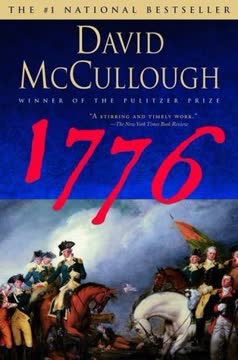
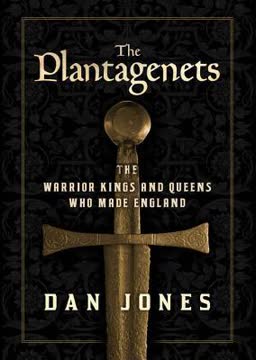
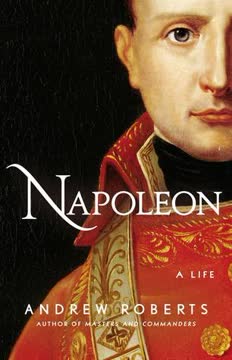
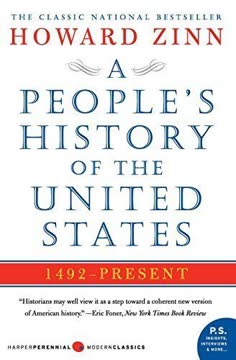
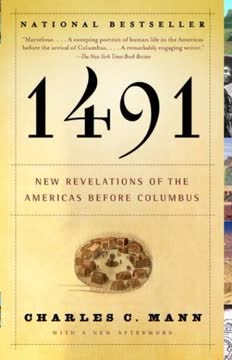
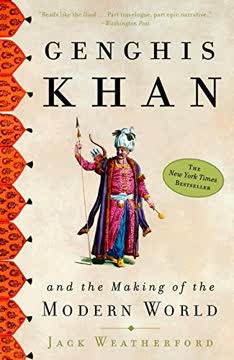
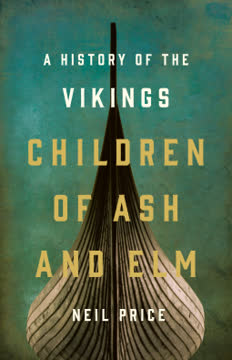

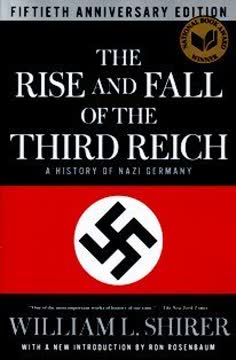
Download PDF
Download EPUB
.epub digital book format is ideal for reading ebooks on phones, tablets, and e-readers.
